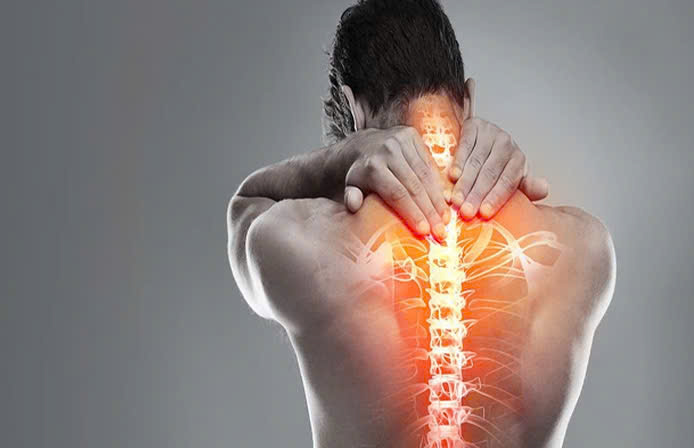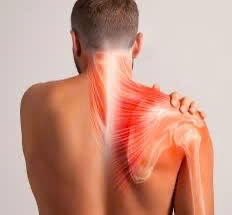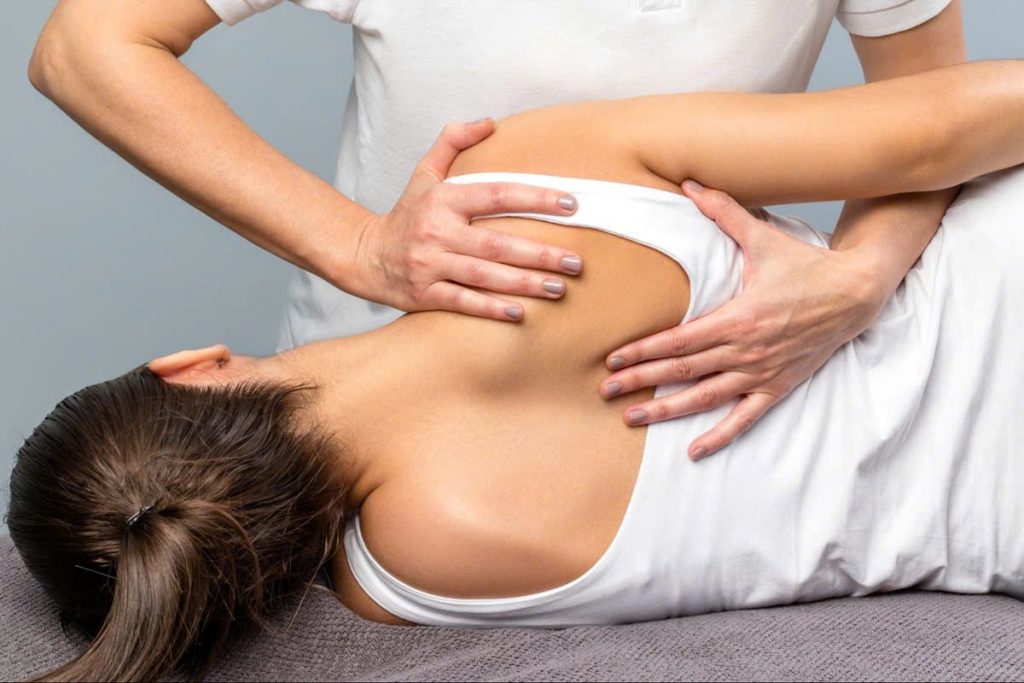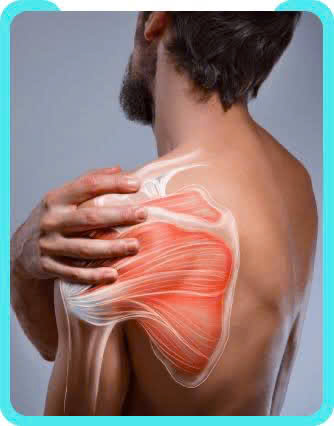How Massage Therapy Helps Relieve Stiff Neck and Shoulder Tension
In today’s fast-paced world, many individuals find themselves plagued by tension and stiffness in their neck and shoulders. Whether from prolonged sitting, stress, poor posture, or muscle overuse, these discomforts can significantly impact daily life and overall well-being. One of the most effective natural remedies for alleviating this type of pain is massage therapy. This ancient practice, built upon manual manipulation of soft tissues, offers numerous benefits that go beyond mere relaxation, targeting the root causes of tension and fostering long-term relief.
Massage therapy is a holistic approach that can be tailored to address specific issues, making it an ideal treatment for those suffering from stiff neck and shoulder tension. Its ability to improve circulation, release muscle knots, and promote relaxation makes it a powerful tool for enhancing physical health and mental clarity. As we delve into this topic, you will discover how massage therapy can be a transformative experience in relieving persistent discomfort and restoring mobility.

Understanding the Causes of Neck and Shoulder Tension
Before exploring how massage therapy alleviates neck and shoulder stiffness, it is essential to understand the common causes behind these uncomfortable symptoms. Recognizing the underlying reasons can help individuals appreciate the value of targeted treatment and make informed decisions about their health routine.
Muscle strain and poor posture are among the primary culprits contributing to neck and shoulder tension. Modern lifestyle habits, such as working long hours at a computer or slouching while using a mobile device, exert undue stress on these regions. These repetitive movements and postural imbalances over time lead to the development of muscle knots, inflammation, and restricted blood flow, which manifest as stiffness and pain.
Stress and emotional tension also play a significant role in chronic neck and shoulder discomfort. When stressed, the body tends to react by tensing up various muscle groups, particularly around the neck and shoulders. This subconscious tightening of muscles creates a cycle where tension begets pain, which in turn causes further stress and discomfort.
Furthermore, injuries and physical trauma can disrupt soft tissue integrity, resulting in localized pain and stiffness. For athletes or individuals involved in strenuous activities, overexertion or improper technique can cause micro-tears in muscles and connective tissues, leading to persistent tightness that may require professional intervention such as massage therapy.
Lifestyle factors such as ergonomic deficiencies, lack of movement, or insufficient stretching routines can exacerbate these issues. For anyone suffering from frequent neck and shoulder stiffness, understanding these common contributing factors emphasizes the importance of a comprehensive approach that includes therapeutic massage as part of a broader strategy for health and wellness.
Sustained tension in these areas can also affect overall posture, leading to a vicious cycle where poor alignment increases strain, further intensifying discomfort. Regular massage therapy sessions can help identify and address these contributors, fostering better posture and muscle balance over time. This comprehensive understanding underscores the need for personalized treatment plans that target individual root causes for effective, lasting relief from neck and shoulder tension.

The Role of Massage Therapy in Alleviating Neck and Shoulder Stiffness
Massage therapy works by manipulating soft tissues to reduce tension, enhance circulation, and promote relaxation. For neck and shoulder stiffness, it offers a multi-faceted approach that addresses pain at both superficial and deeper levels. The effectiveness of it lies in its ability to alleviate muscle knots, improve blood flow, and facilitate the release of endorphins, which are natural painkillers.
Through targeted techniques, massage therapists can work on specific muscle groups to release built-up tension, improve flexibility, and reduce inflammation. Its ability to identify and treat trigger points—small, hypersensitive areas within muscles—is particularly beneficial in resolving localized pain and tightness. Such trigger points can radiate pain to other regions, making relief a complex but achievable goal with skilled massage therapy.
Beyond the physical benefits, it fosters mental relaxation, reducing cortisol levels and promoting a state of calm that is essential for healing. The soothing nature of massage encourages patients to breathe deeply and consciously relax, breaking the cycle of muscular tension and stress. This holistic moment of care can yield profound benefits, restoring both physical and emotional balance.
A key advantage of massage therapy is its versatility. Different techniques, such as Swedish massage, deep tissue massage, or myofascial release, can be tailored to meet individual needs. For example, deep tissue techniques are particularly effective for chronic pain and muscle adhesions, while lighter Swedish strokes promote general relaxation. Therapists often combine methods to provide comprehensive relief from neck and shoulder issues, ensuring that treatment addresses both superficial and deep muscle layers.
The physiological effects of massage go beyond immediate relief. Regular sessions can improve muscle elasticity, enhance joint range of motion, and promote better posture habits. These benefits contribute to the prevention of future tension and injury, highlighting how massage therapy serves as both a treatment and a proactive strategy for maintaining musculoskeletal health.
Moreover, massage therapy stimulates the lymphatic system, aiding in the removal of toxins that can accumulate in tight, overused muscles. Increased circulation accelerates nutrient delivery to tissues and accelerates healing processes. The cumulative effect results in enhanced muscle health, decreased sensitivity, and a decreased likelihood of recurrent stiffness.
In combination with other self-care practices such as stretching, ergonomic adjustments, and stress management, massage therapy becomes a cornerstone of a comprehensive plan aimed at reducing neck and shoulder tension. This integrated approach underscores its significance in promoting sustainable, non-invasive relief.

Specific Massage Techniques Effective for Neck and Shoulder Tension Relief
Different massage techniques target various layers and types of tissue, each offering unique advantages for relieving neck and shoulder tension. Knowing which methods are most effective can help individuals choose the right treatment or understand what to expect during professional sessions.
One of the foundational techniques used in massage therapy is Swedish massage. Characterized by long, gliding strokes, kneading, and circular movements, Swedish massage promotes overall relaxation and improves circulation in superficial muscles. Its gentle approach makes it suitable for those new to massage or with sensitive areas, reducing tension and calming hyperactive muscle fibers. This technique also fosters mental relaxation, which is vital for reducing stress-related muscular tightness.
Deep tissue massage is particularly effective for chronic tension and muscle adhesions. It involves applying sustained pressure to deeper muscle layers and fascia, breaking down scar tissue and realigning muscle fibers. This technique alleviates long-standing stiffness and pain, especially in cases where muscle knots have formed over time. While it may cause some discomfort initially, the results are often profound, providing targeted relief from persistent neck and shoulder tension.
Myofascial release emphasizes the fascia—the connective tissue surrounding muscles—and aims to restore its normal flexibility and function. Gentle, sustained pressure is applied to release restrictions and improve overall tissue mobility. This technique is especially useful for those with postural imbalances or chronic tightness, as it helps improve posture and reduces compensatory strain patterns in the neck and shoulders.
Trigger point therapy focuses on identified hyperactive spots that refer pain to other tissues. By applying pressure directly to these points, practitioners can instantly diminish localized pain and prevent it from radiating further. This approach is particularly beneficial when muscle knots are the primary cause of discomfort and stiffness, offering rapid, targeted results.
Lastly, techniques like manual lymphatic drainage can enhance fluid flow and reduce swelling in the affected areas. Although less commonly associated directly with muscle tension relief, such methods support overall tissue health and promote faster recovery from strain or injury. Combining these techniques based on individual needs results in a comprehensive treatment plan that maximizes benefits and fosters sustained relief.
For individuals suffering from neck and shoulder tension, understanding the nuances of these massage therapy techniques allows for better engagement with practitioners and enhances the effectiveness of each session. Professionally guided massage treatment tailored to specific issues can significantly shorten recovery times and elevate the quality of life.

How to Incorporate Massage Therapy Into Your Routine for Long-term Relief
Integrating massage therapy into a regular health and wellness routine can yield sustainable benefits in managing and preventing neck and shoulder tension. Consistency is key; routine treatments can help maintain muscle health, improve posture, and reduce the likelihood of recurring pain episodes.
Start by scheduling regular massage sessions with a qualified therapist who can assess your specific needs. Depending on your lifestyle and severity of symptoms, this could mean weekly or bi-weekly visits initially, then transitioning to monthly or quarterly maintenance. Building a lasting relationship with your therapist ensures a tailored approach that evolves with your progress and concerns.
Complement professional massage with at-home practices to reinforce its benefits. Regular stretching targeted at neck, shoulder, and upper back muscles can maintain flexibility and prevent tightness from re-establishing. Incorporating ergonomic adjustments at your workspace, such as proper chair height and monitor placement, minimizes strain during daily activities. These small but consistent measures support the effectiveness of massage therapy and extend its positive impact.
Mindfulness and stress reduction techniques, like deep breathing exercises or yoga, work synergistically with massage to tackle the emotional and physiological components of muscle tension. When stress levels are lowered, muscle tightness tends to decrease, making massage therapy even more effective. This holistic approach fosters resilience against tension triggers and promotes a healthier, more balanced lifestyle.
Finally, listen to your body and be attentive to early signs of tension. Promptly addressing discomfort with self-care routines or scheduled massages can prevent minor issues from escalating into chronic problems. Educating yourself about body positioning, movement, and relaxation techniques empowers you to actively participate in your healing process and maintain optimal musculoskeletal health over time.
Incorporating massage therapy as part of your comprehensive self-care routine not only provides immediate relief but also builds resilience against future tension and stiffness. It transforms how you care for your body, fostering long-term wellness, mobility, and vitality that extend well beyond individual sessions.
Conclusion
In summary, massage therapy emerges as a highly effective natural method for relieving stiff neck and shoulder tension. By understanding the root causes—such as poor posture, stress, injury, and lifestyle habits—and applying targeted massage techniques like Swedish, deep tissue, and myofascial release, individuals can experience profound relief and improved mobility. Integrating massage therapy into a consistent routine, alongside ergonomic adjustments, stretching, and stress management, promotes sustained musculoskeletal health, reduces recurrence, and enhances overall well-being. Embracing this holistic approach allows one to regain comfort, improve posture, and enjoy an active, pain-free life, affirming massage therapy’s vital role in managing neck and shoulder discomfort naturally and effectively.
Understanding the Physiological Benefits of Massage Therapy
Massage therapy is not merely about relaxation; it offers a plethora of physiological benefits that significantly impact overall health and well-being. Through the manipulation of soft tissues, massage promotes effective communication between the brain and the body, enhancing numerous biological systems.
The Role of Circulation in Healing
At the heart of massage therapy’s efficacy lies its ability to enhance circulation. The pressure applied during a massage stimulates blood flow to the affected tissues, promoting oxygenation and nutrient delivery.
Increased circulation not only helps in the immediate relief of muscle tension but also supports the body’s natural healing processes. When blood flow is enhanced, it speeds up the removal of metabolic waste products, such as lactic acid, that can accumulate in muscle tissue during physical activities or stress. This detoxification helps reduce fatigue and soreness, allowing for quicker recovery post-exercise or after long periods of inactivity. Enhanced circulation serves as a critical factor in reducing the likelihood of muscle cramps, stiffness, and injuries, thereby contributing to overall musculoskeletal health.
Furthermore, improved circulation can help with the regulation of cardiovascular health. As a person engages in regular massage sessions, it can potentially lower blood pressure and heart rates, aiding in relaxation and reducing the risk of hypertension. By maximizing blood flow, individuals may also notice improved skin health, as nutrients and oxygen are effectively transported to the dermal layers, resulting in a rejuvenated and glowing complexion.
Stress Reduction and Hormonal Balance
Stress plays a significant role in exacerbating tension within the neck and shoulder regions. Massage therapy serves as a powerful antidote by stimulating the release of endorphins, the body’s natural feel-good hormones, which create a sense of well-being.
Moreover, during a massage, levels of cortisol, the primary stress hormone, are shown to decrease. High cortisol levels can negatively impact health in various ways, such as promoting inflammation and impairing immune function. With consistent massage therapy, individuals can effectively manage their stress levels, contributing to an overall balanced hormonal environment conducive to health and longevity.
Incorporating mindful practices alongside massage—such as meditation or deep breathing—can further enhance stress management. This dual approach fosters a profound sense of relaxation, which not only alleviates immediate tension but also builds resilience against future stressors. By creating a state of calm through regular massage, individuals can cultivate a greater sense of control over their emotional and mental well-being.
Enhanced Flexibility and Range of Motion
Another notable physiological benefit of massage therapy is its capability to enhance flexibility and range of motion. Regularly working on muscle tissues, tendons, and joints facilitates improved elasticity, which is essential for physical activities and overall mobility.
When muscles and connective tissues are relaxed and pliable, individuals experience a greater ease of movement. This is particularly beneficial for those who engage in physical activities, as flexibility leads to improved performance and a reduced risk of injuries. By addressing tight muscle groups, such as those in the neck and shoulders, massage therapy helps restore natural alignment, allowing for a wider range of motion and improved posture while performing daily tasks.
Additionally, by addressing tightness through targeted techniques, massage can prevent the compensation of other muscle groups that might otherwise overwork to stabilize or compensate. Therefore, improving flexibility not only enhances physical performance but is also crucial in preventing chronic pain syndromes resulting from postural imbalances or repetitive movements.
Tailored Massage Techniques for Specific Needs
Not all massage techniques are created equal; understanding the variety of methods available allows individuals to tailor their sessions to better meet their specific needs and conditions. It’s essential to consider factors such as personal preferences, medical history, and specific muscle issues when selecting a technique.
Swedish Massage for General Wellness
Swedish massage is often viewed as the go-to option for those looking to experience relaxation and overall wellness. By employing long, flowing strokes, kneading, and gentle circular movements, it promotes blood circulation while minimizing tension in the body.
This method is particularly useful for individuals who are new to massage therapy or seeking a gentle introduction to the practice. Swedish massage creates a tranquil environment that allows clients to melt away stress and unwind completely. Moreover, it sets the foundation for future sessions that may incorporate more specialized techniques as individuals gain comfort with the process.
Its focus on relaxation also makes Swedish massage ideal for those who experience anxiety or have difficulty disconnecting from a fast-paced lifestyle. Clients can leave the session feeling rejuvenated, mentally clear, and with an overall improved mood—a perfect step toward holistic wellness.
Deep Tissue and Sports Massage for Active Lifestyles
For active individuals or athletes, deep tissue and sports massage techniques cater specifically to their needs. Deep tissue massage focuses on penetrating tension in deeper muscle layers and fascia, addressing issues from past injuries or chronic tightness.
This method helps break down scar tissue and relieve painful muscle knots, presenting a profound solution for anyone involved in physical training, especially those who frequently experience stiffness in the shoulders and neck from weightlifting or repetitive movements in sports. Athletes often find that incorporating deep tissue massage into their routine not only enhances recovery times but also boosts overall performance.
Sports massage, on the other hand, specifically targets areas that are overused in athletes. This approach may combine elements of Swedish and deep tissue techniques, focusing on enhancing flexibility and preventing injury. By addressing specific muscle groups and joints prior to competition or strenuous physical activities, sports massage promotes both physical and mental readiness, making it an invaluable resource for any competitive athlete.
Myofascial Release and Trigger Point Therapy for Chronic Conditions
Individuals dealing with chronic tension or conditions like fibromyalgia can benefit from specialized techniques such as myofascial release and trigger point therapy. Myofascial release works on releasing tension in the fascia, which often holds chronic tension that extends beyond the muscles themselves.
By applying gentle, sustained pressure, practitioners can alleviate restrictions and improve tissue mobility. This method is especially effective for those suffering from postural imbalances that lead to chronic pain in the neck and shoulders. Participants frequently notice the reduction of discomfort as they release emotional and physical tension that the fascia holds.
Trigger point therapy, on the other hand, provides targeted relief to specific muscle knots that cause pain in various body areas. By working on these trigger points, therapists can provide immediate relief, helping reduce discomfort and pain that radiates from one area to another. This combination of techniques can create a comprehensive treatment plan that considers the complexities of chronic discomfort.https://www.tiktok.com/@jobe.spa.massage?_t=ZS-8uucYtHwssr&_r=1
Conclusion
In summary, massage therapy plays a crucial role in relieving neck and shoulder tension while providing a multitude of physiological benefits that enhance overall well-being. By understanding specific techniques—such as Swedish, deep tissue, and myofascial release—individuals can tailor their treatments to match their unique needs. Incorporating regular massage sessions into a health routine, alongside stress management, ergonomic improvements, and self-care practices, promotes lasting relief and builds resilience against future discomfort. Through a combination of targeted techniques, individuals can improve their physical mobility, reduce stress hormones, and foster a holistic approach to enhancing their quality of life. Embracing these insights positions massage therapy as not just a luxury, but an essential component of a sustainable wellness lifestyle.https://jobedubaispa.com/massage-10/
